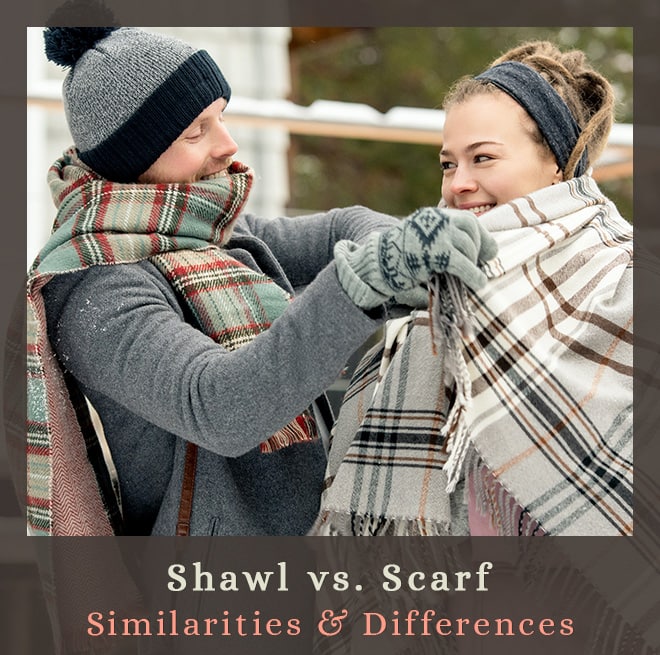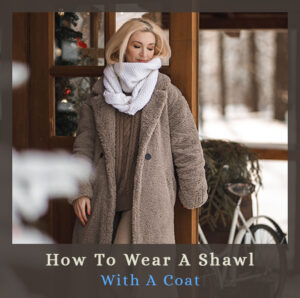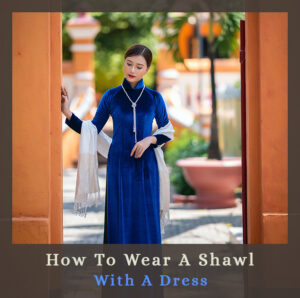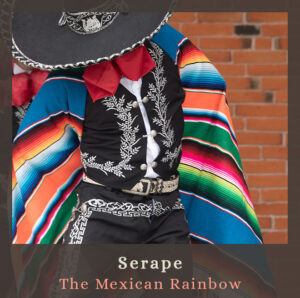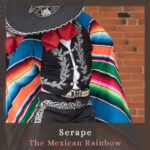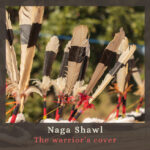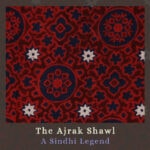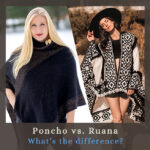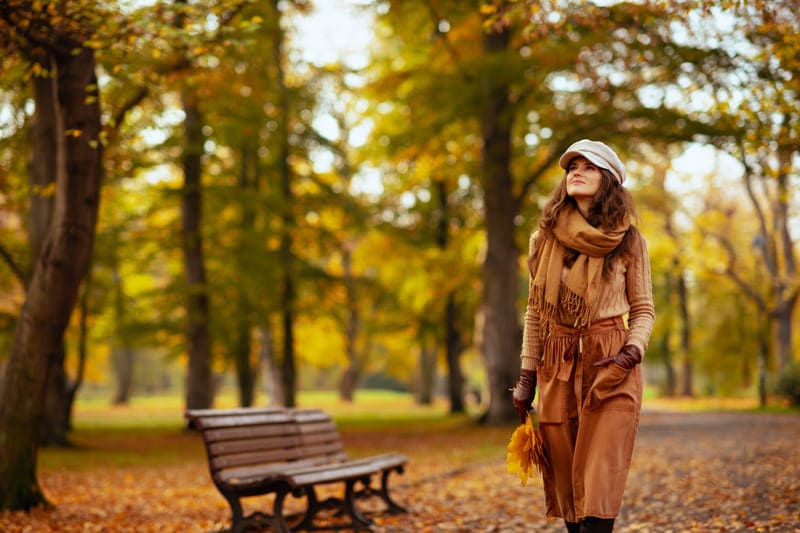The difference between a shawl and a scarf lies mainly in the size and how they’re styled. For both, the basic shape is rectangular, while the shawl is large and wide, and the scarf is narrow and long.
Nothing speaks louder than images – Here are scarves:
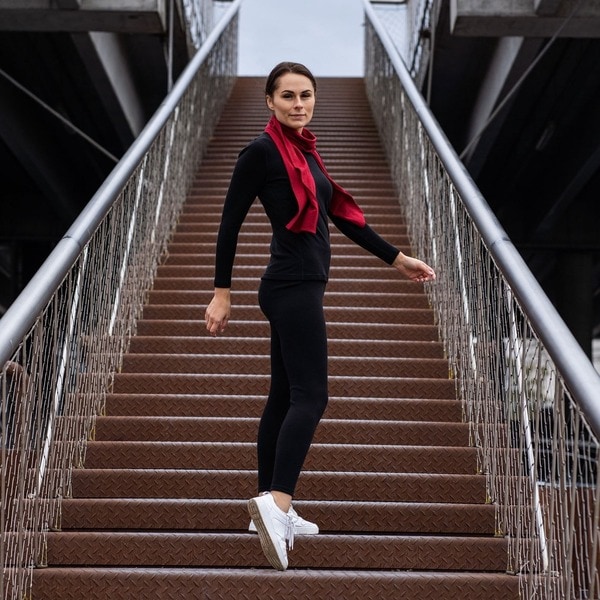
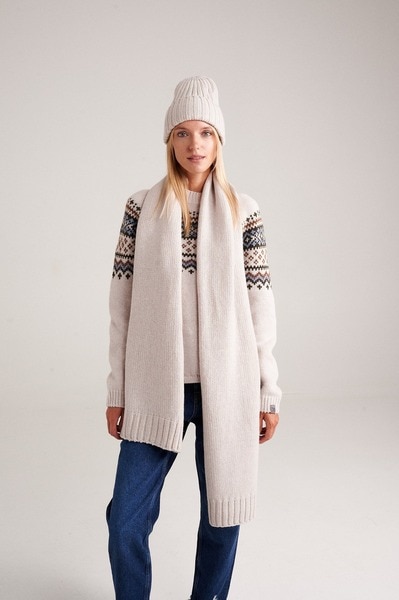
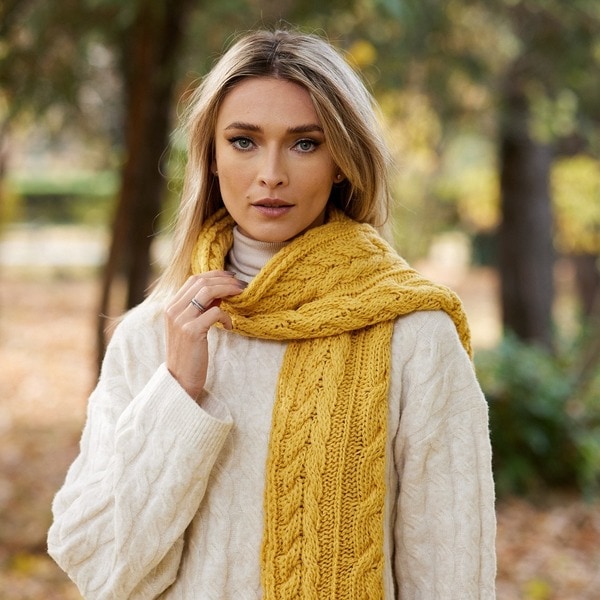
Red Merino Wool Scarf by Menique (Etsy)
Cashmere & Merino Wool Scarf by WoolHouseESHOP
(Etsy)
Yellow Irish Merino Scarf by IrishTweedStore (Etsy)
And those are shawls:
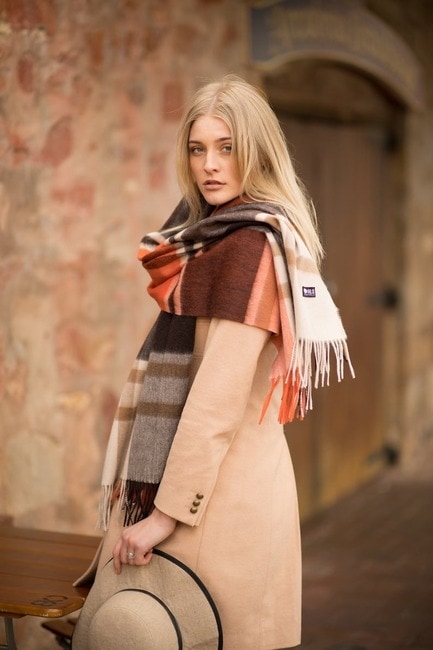
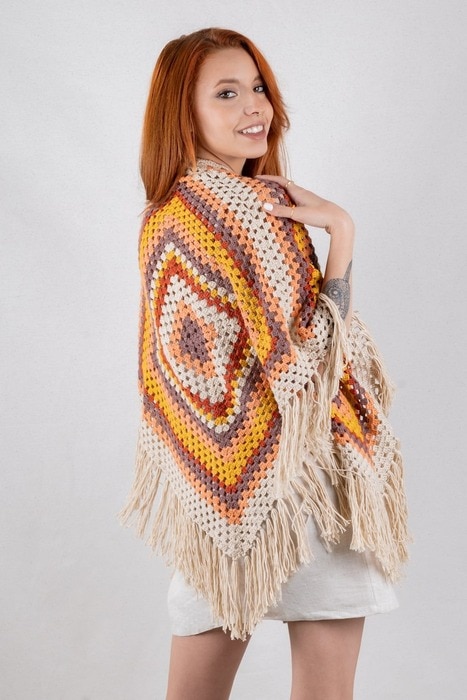
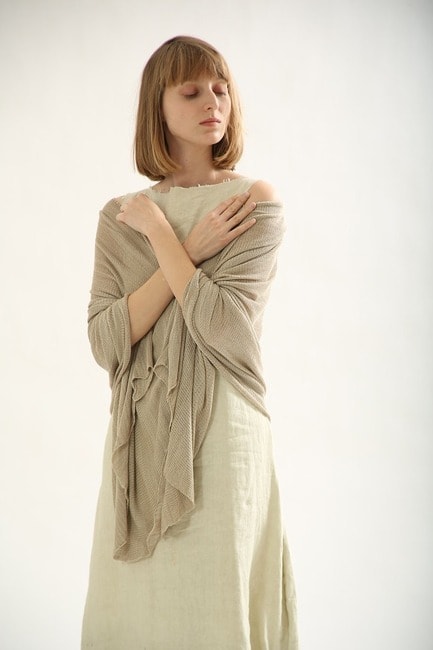
Australian Merino Lambswool Shawl by alsAustralia (Etsy)
Multicolor Crochet Boho Shawl by BastKnitwear (Etsy)
Natural Knitted Shawl by TOOSHAAYA (Etsy)
As you can see, the shawl is a versatile wrap, usually laid over the shoulders, draped around the body, or wraps the upper body. A scarf warps the neck alone.
Both are mainly used to provide warmth and fashionable statements and have many more uses. We will explain it all in this article.
For a start, let’s go for the gross differences and similarities.
To make it more clear, here’s a table:
Shawl Vs. Scarf
| Feature | Shawl | Scarf |
|---|---|---|
| Wearing Style | Typically drape over shoulders or wrapped around the upper body. | Used for wrapping around the neck. |
| Size & Shape | Often a larger and wider rectangular, but can also be a square, triangular, half circle, and more. | Typically a narrower and longer rectangular, but can also be a square or triangular (and rarely other shapes). |
| Material | Often made of wool, cotton, silk, and synthetic fibers, and can be found in all available fabrics. | Often made of wool, cotton, silk, and synthetic fibers, and can be found in all available fabrics. |
| Use | Used as a wrap for warmth, as a fashionable accessory, for ceremonial purposes, and for ideologist support. | Primarily used as a neck wrap for warmth, as a fashionable accessory, for ceremonial purposes, for supporting sports teams, and for ideologist support. |
| Decoration | Can be anything from plain to heavily embroidered or adorned, especially in traditional authentic garments. | Typically simpler. |
| Cultural Significance | In many cultures around the world, shawls have ceremonial or traditional significance. | In many cultures around the world, shawls have ceremonial or traditional significance. |
| Seasonality | Can be worn in all seasons (depending on the material) but is often associated with cooler weather or evenings. | Can be worn in all seasons (depending on the material) but is often associated with cooler weather or evenings. |
That was the very brief version, now let’s dive deeper:
The Similarities & Differences:
Use
Shawls and scarves are both very useful accessories that have been staples worldwide since ancient times. Both can provide warmth, are fantastic fashion accessories to style up every outfit, and can offer sun protection. They are used on formal occasions and traditional religious ceremonies in many cultures, and are sometimes worn to show support for a particular ideology.
While shawls and scarves share similarities, they also have distinct uses; scarves are mainly worn wrapped around the neck, while the larger size of shawls makes them more versatile, allowing them to be worn in many more ways.
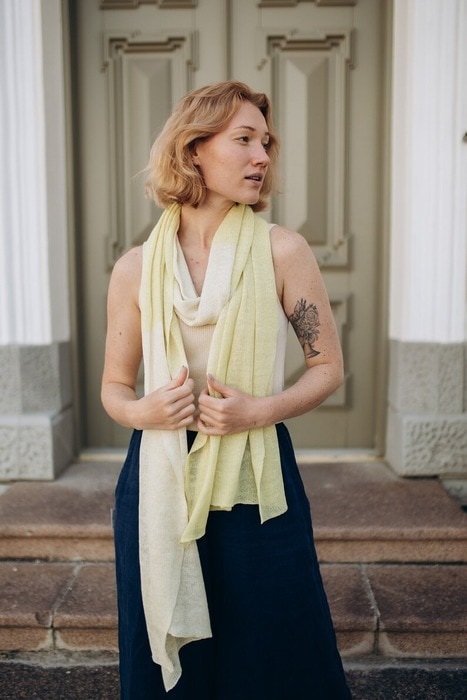
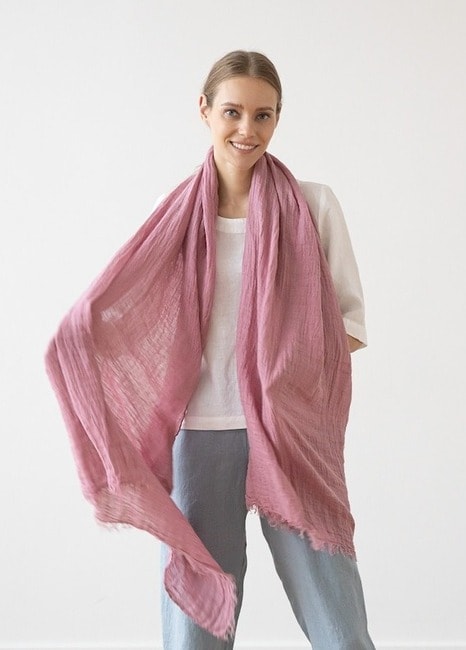
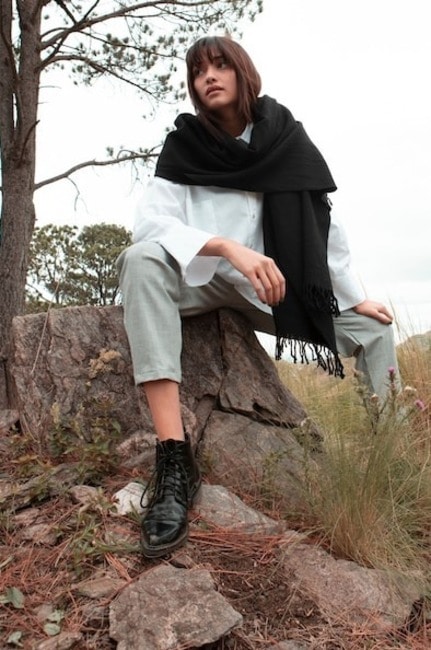
Soft Yellow Hand Knitted Linen Shawl by KnittedLines (Etsy)
Linen Shawl with Handmade Fringes by LinenMeStore (Etsy)
Soft Merino Wool Shawl by Feebra (Etsy)
Uses in the West & East
For elegant Western attire, shawls are more common for women, but they are earning their place in men’s wardrobes more and more. Scarves are very popular for both men and women, and are often incorporated into men’s formal suits. In the East, shawls are commonly used by men and women, in many versions and styles, and scarves seem to be more frequently used by men.
Ideologist Symbols & Support
Both garments can also symbolize ideological support, representing the wearer’s commitment to a specific organization, cause, or movement [1], [2].
Scarves are often used by sports fans to show team support, often featuring team colors or logos, and are worn during matches or events.
Shawls for Modesty
Shawls are also frequently used for modesty purposes by both men and women in various cultures. Some popular examples include:
The Muslim Hijab: A veil worn by Muslim women that covers the head and chest.
The Indian Dupatta: A long scarf draped across the head and shoulders or on the chest draping backwords, commonly worn by women in South Asia.
The Buddhist Saṃghāti: A robe worn by Buddhist monks and nuns.
The Greek Himation: An ancient Greek garment, a larger piece of cloth that could be draped over the body or worn as a shawl.
Shape & Size
The basic shape of both shawls and scarves is typically rectangular, but both can also be found in square, triangular, and many other variations – truly, the designs are endless. Shawls tend to be larger garments, designed to comfortably wrap and provide warmth when temperatures drop. However, as they are also popular fashion accessories and, in many cases, used for modesty reasons, they can be quite small, just enough to cover the shoulders.
Scarves designed for winter tend to be more generous in size, i.e., less narrow and longer, so they can be wrapped around the neck several times to achieve perfect insulation.
Seasons
Both shawls and scarves are mainly used to provide warmth and protect our bodies from harsh weather, so they are commonly made of warm fabrics.
However, as these pretty garments have become essentials serving us in so many ways, both have versions for all seasons. They can be made from a variety of materials, from lightweight, breathable, thermo-control, ecologic, and biodegradable knits to heavy traditional wool.
Lightweight shawls can provide a light layer of protection from the summer sun, offer modesty, or warm you up when a chilly evening breeze is around, and this makes them great for outdoor events.
Lightweight scarves made of materials like cotton or linen are mostly used in summer as fashionable accessories. They are also very useful for protecting the head from the sun, and smaller types of scarves like bandanas and neckerchiefs are used for absorbing sweat when working outdoors, which is incredibly helpful and, moreover, adds a bunch of style.
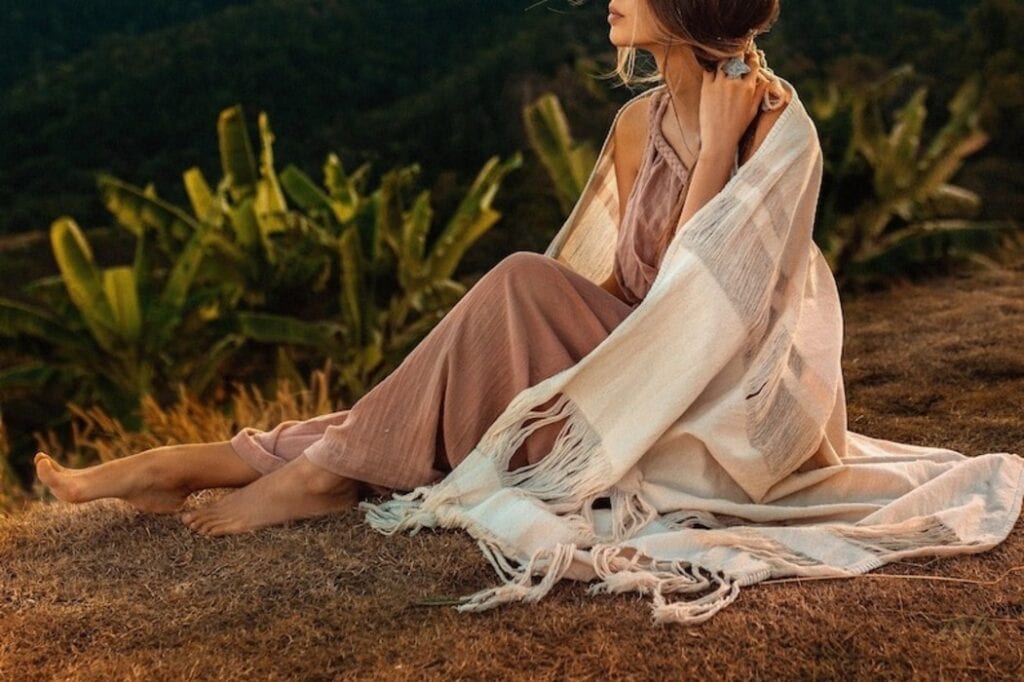
Style
In all seasons, we want to look our best, and both shawls and scarves offer us an easy way to add some sparkle to our outfits. Whether it’s just a contrasting color to break the monotony or a unique garment that makes a fashion statement, these accessories have an important role in our wardrobe.
Cultural Symbolism
Both Shawls and Scarves have deep roots in culture, tradition, and religion all over the globe, they are part of wedding and mourning rituals as well as used to carry babies or make a gesture of honor! Here are some global cultural and religious roles of shawls and scarves:
Religious Practices:
Shawls, for example, are worn by the groom in Hindu weddings as part of his traditional attire. In some Christian denominations, a prayer shawl might be given to someone going through a difficult time as a symbol of support. And in Judaism, the “tallit” is a fringed shawl worn during prayer.
In Islam, the “hijab”, as mentioned before, is a scarf worn by many Muslim women for modesty.
Cultural Traditions:
In many cultures, shawls are worn as part of traditional dress. For example,
- the Spanish “mantón de Manila” is a silk shawl traditionally worn in Spain on special occasions. Flamenco dancers long ago adopted it and became part of the dances’ costume.
- In Mexico, the “rebozo” shawl is part of the traditional outfit and is also used to carry babies and large bundles, especially among indigenous women.
- In some cultures, scarves are worn as symbols of cultural or national identity. For example, the “keffiyeh” is a traditional Arab scarf that has become a symbol of Palestinian nationalism.
- In many cultures like Hinduism and Sindh, giving a shawl as a gift is a gesture of respect. In some Buddhist traditions, a scarf known as a “kata” is a light scarf that is given to monks, family, friends, or guests to express gratitude and wish for happiness and prosperity.
- Likewise, the Sindhis in Pakistan give the “Ajrak shawl” to honor and express gratitude to their guests.
- In some cultures, scarves are worn as part of mourning rituals. In Victorian England, women wore black scarves or veils as part of their mourning attire, and in Mexico, they have the “Rebozo de Luto”, which is a perfumed mourning shawl that provides physical space for grief and mourning, and the scent impregnated in its fibers makes these shawls incredibly memorable and comforting.
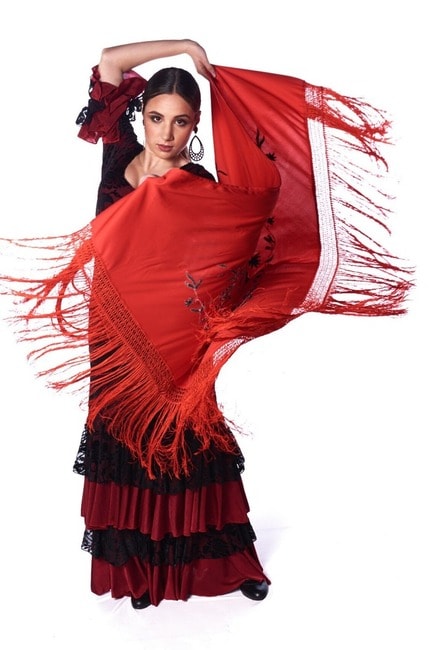
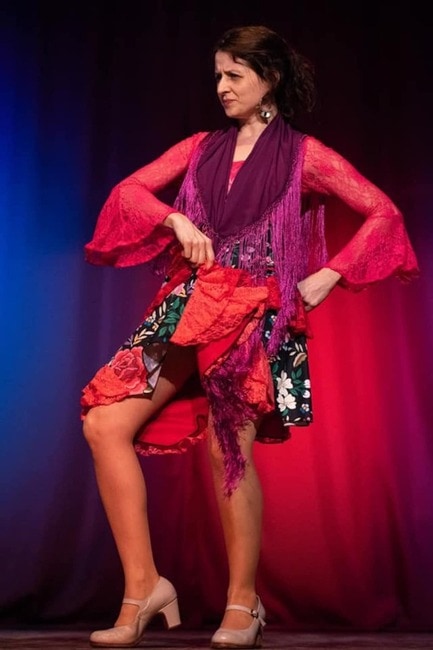
Shawl for Flamenco Dance by ANUKABarcelona (Etsy)
Classic Flamenco Silk Shawl in Plain Colors (many available) by AmapolasMoras (Etsy)
Heritage and Craftsmanship:
Many shawls, such as the Kashmiri “Pashmina” or the Scottish “tartan” shawls, represent a long history of craftsmanship and are often passed down through generations as treasured heirlooms.
Defining the Lines: Distinguishing Between Shawls and Scarves
Often, shawls and scarves have similar sizes, which creates confusion about what to call them. It is true that some scarves can easily be called shawls and vice versa, the measures of length and width are pretty flexible.
How do we know if a garment is a shawl or a scarf?
If it can cover your shoulders, it can be called a shawl, if the garment is only sufficient for wrapping the neck, it is a scarf.
The borders between a shawl and a scarf are open.
Fashion is dynamic, and the terms are also associated with trends. In the last few years, the blanket scarf took over as the most trendy garment for winter, but looking at it, measuring it, and understanding its uses, you see a square shawl!
At weddings, it is very common for the bride to wear a shawl, but when you look at the vast options of these garments, you will also find tiny pieces of fabric that can cover the shoulders only and are made just to provide a taste of modesty. When you see these items out of the wedding context, you would more likely call them scarves.
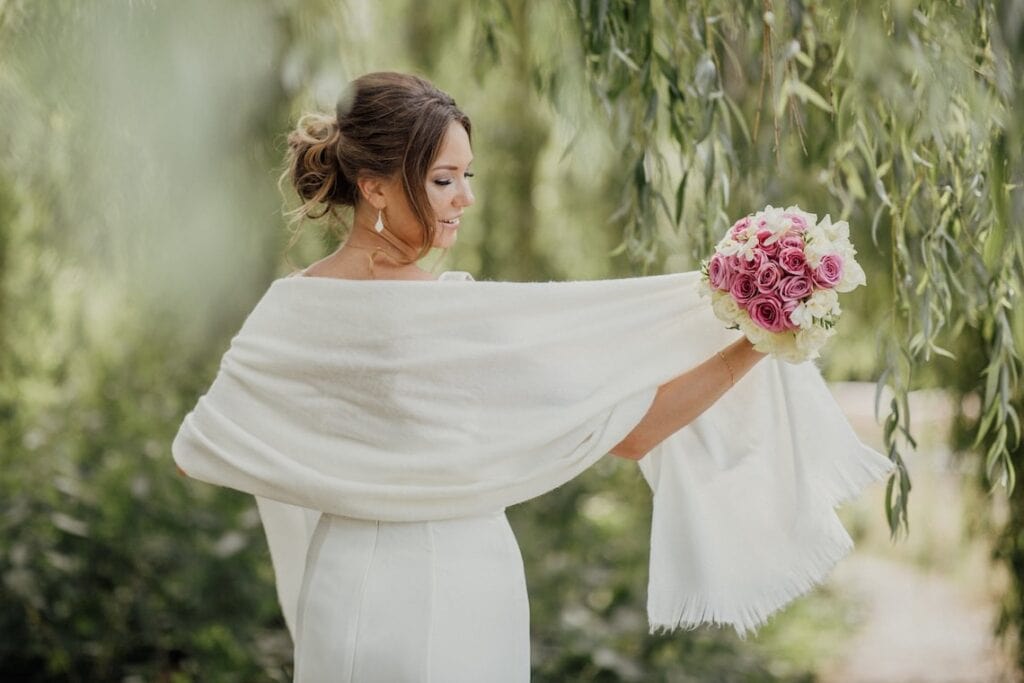
How do you wear a shawl like a scarf?
To wear a shawl like a scarf, fold it lengthwise several times until it becomes a narrow rectangular. Then, wrap it around your neck, you can either leave the ends hanging down (at the front or back or both), or loop it once or more around your neck for a cozier look. You can also tuck the ends into the loop for a neat, polished appearance. Adjust the shawl to your preferred style and comfort.
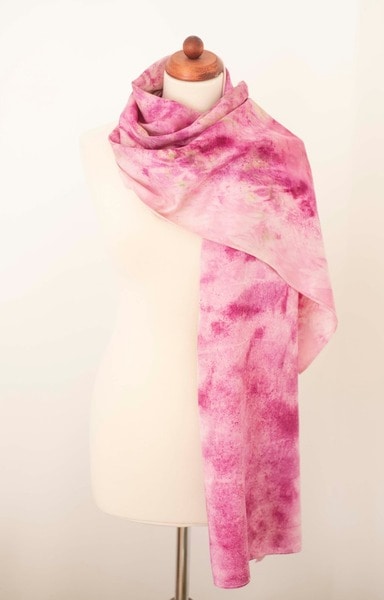
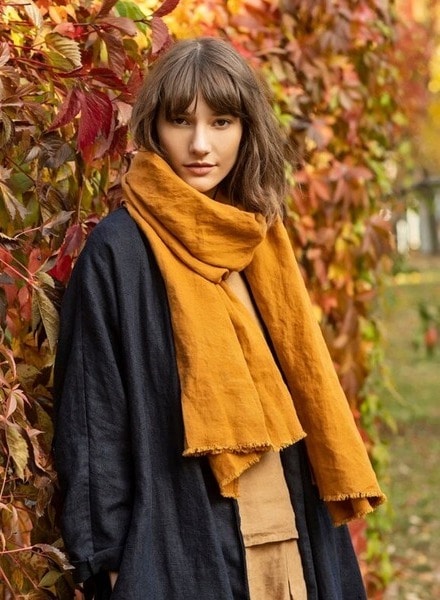
Ahimsa Veg-Dyed Silk Scarf Shawl by AmayDesignBerlin (Etsy)
Classic Oversized Linen Shawl by LINENIDstudio (Etsy)
How do you wear a scarf as a shawl?
To wear a scarf as a shawl, simply open the scarf fully and drape it over your shoulders. You can let it hang loosely, or you can wrap it around your arms for added warmth. For a more elegant look, you can throw one end over the opposite shoulder, or for a more feminine style, lay it on your shoulders, let it slip to your elbows, and hold it there. Adjust the scarf to sit comfortably.
Alternative / Creative Uses
Both scarves and shawls are versatile and can be used in multiple ways, beyond their fashionable manner or warmth. It is common to create a head cover with shawls or scarves, and there are many styles you can achieve this way. Shawls have been seen on the runway worn as skirts over pants, providing a cool and stylish cool look. A shawl can easily be transformed into a homey strapless dress, a sarong, a kimono with a belt, a blanket, a curtain, or a sack to carry things. Sometimes, if it is strong enough, you can even make a hammock out of it. Scarves can be used as belts, to tie things together, or to make carrying shopping bags easier.
To Tie It All Up
Understanding the close relationship between these two garments can be either confusing or relieving because, in the end, maybe it doesn’t really matter what you call it. What matters is that you choose the right ones for your needs and use them as you wish. From my experience, you might fall in love with them all, but there will be one, in particular, that becomes your inseparable go-to.

